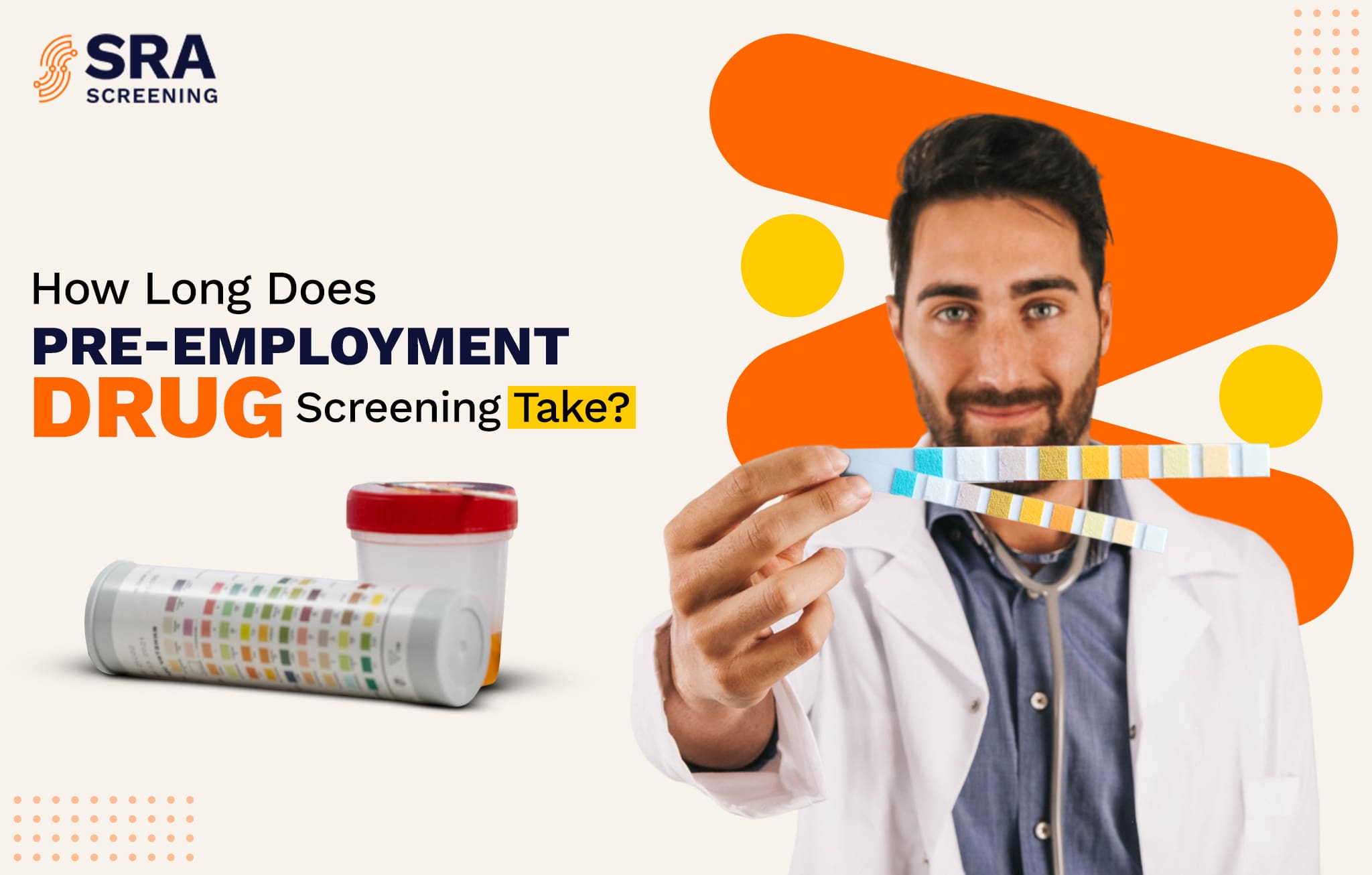
Navigating the world of pre-employment drug screening can be a complex and often an overwhelming task. This process is not one where you can selectively apply rules—it is governed by a combination of industry standards, job functions, state-specific regulations, and federal laws. Staying informed about the latest developments and regulatory changes is therefore essential.
While drug testing is not legally mandatory in all cases, it has become a critical component of the hiring process. It plays a key role in promoting workplace safety and productivity, and in mitigating potential risks to the business.
By establishing clear, effective drug screening protocols, recruiters can foster a positive and compliant workplace culture—one that supports employee well-being while safeguarding organizational interests.
In this blog, we’ll explore how long the drug screening process typically takes, various drug and occupational health tests available, and provide practical guidance to help you streamline this essential recruitment step.
A pre-employment drug test is conducted to determine whether a prospective hire is using illicit substances or misusing prescription medications.
Pre-Employment Drug Screening not only helps in selecting reliable talent but also safeguards the existing workforce from drug-related incidents and workplace disruptions. A safe, healthy, and high-performing environment naturally attracts top-tier candidates who are committed to delivering exceptional results.
Moreover, employment drug testing serves as a proactive measure to protect a company’s reputation and credibility. Both job seekers and clients are more inclined to trust organizations that prioritize safety, responsibility, and integrity. In the long term, these values translate into improved service quality, enhanced brand image, and sustained business success.
There are several types of drug screening methods available, each designed to detect specific substances and, in some cases, estimate how long those substances have been in an individual’s system. While numerous testing options exist, the most used methods include:
The most widely used method of drug testing to detect various drugs and alcohol.
This method provides a longer detection window, often up to 12 months by analyzing a hair sample.
Oral Fluid testing is effective for detecting recent drug use through saliva.
Required by the Department of Transportation (DOT) for safety-sensitive positions in various transportation sectors. These screenings follow strict federal guidelines and often involve a more comprehensive and time-intensive testing process.
Occupational health services extend beyond drug testing to include employee wellness, pre-placement testing, ergonomics, occupational therapy, occupational medicine, and more.
Pre-employment drug screening can often feel like a significant hurdle—or a waiting game—for candidates during the hiring process. It’s natural for applicants to wonder how long the process will take. In reality, the timeline depends on coordination between three key parties: the employer (client), the applicant, and the background screening provider.
The process begins with the employer determining which type of drug or occupational health screening is required based on the role and regulatory obligations. Once the appropriate test is selected, the applicant is scheduled to visit an authorized laboratory to complete the screening. After the sample is collected, the lab analyzes and processes the results. Only then are the results delivered to the screening provider or employer for final review.
This collaborative sequence ensures accuracy, compliance, and informed decision-making, but it also means that each step must be completed efficiently to avoid unnecessary delays. Below we have detailed the average length of the most common drug and health screenings:
Results are typically available 24 to 72 hours after the sample is collected and processed. Once complete, the findings are sent to the background screening provider.
Hair analysis offers a longer detection window and generally takes up to 72 hours to process, depending on lab capacity and testing complexity.
The turnaround time is usually 24 to 48 hours, depending on whether the test is conducted on-site or requires off-site lab analysis.
For Department of Transportation (DOT) screenings, negative results are often available within 24 to 48 hours. However, if the result is positive, it may take 3 to 5 business days due to DOT requirements.
These services typically take 2 to 3 business days to complete, though timing may vary based on the specific screenings involved. Tests that include blood work or additional diagnostics may extend the processing time.
Creating a smooth and effective drug testing process is key to keeping our workplace safe, respectful, and compliant. We’ve broken down the steps, how long each step typically takes, and the most common services that can make things easier for everyone involved. When recruiters follow these best practices, they’re not just checking a box—they’re helping build a strong, supportive, and drug-free workplace. It’s about protecting the organization while also ensuring the candidate has a positive experience.
Understanding the timeline for pre-employment drug testing is essential for both employers and candidates. With a clear grasp of the process – and adherence to legal requirements and industry best practices – organizations and job seekers can approach drug screening with confidence and transparency.
SRA Screening provides professional pre-employment drug testing services customized to your workforce needs. Our comprehensive services are designed to help you safeguard your business, attract and retain top talent, and foster a secure, compliant work environment.
Connect with the SRA Screening team today to learn how their trusted solutions can support your hiring goals and elevate your workplace standards.
While you may have heard the terms “hard and soft inquiries” used
Pulling credit reports on a customer makes sense when determining the credit
Introduction: An insurance provider is currently embroiled in a legal battle after
Get updates, exclusive offers, and insights straight to your inbox.
Key Resource Hub
Your Questions Answered
Editorial team insights